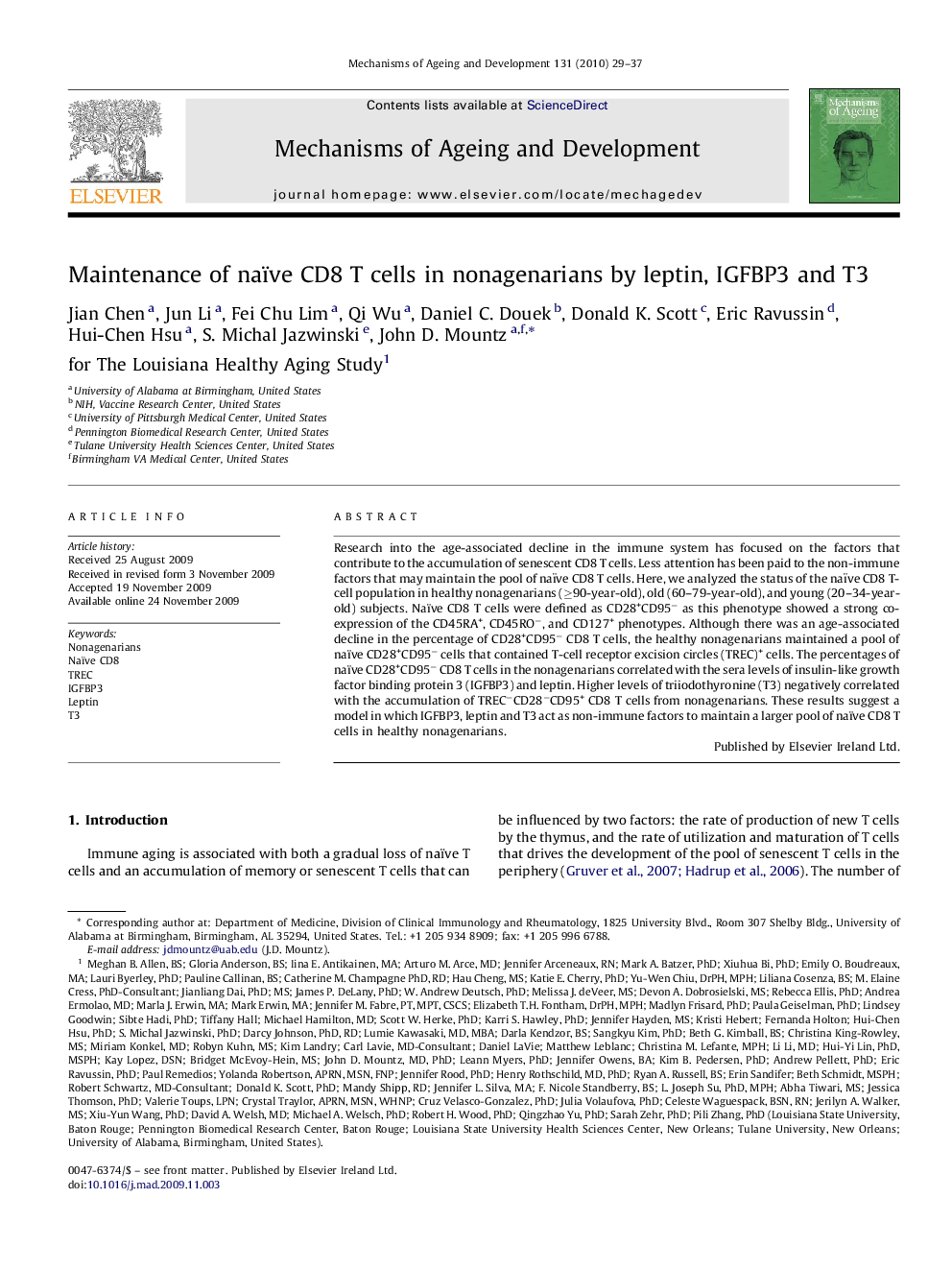| Article ID | Journal | Published Year | Pages | File Type |
|---|---|---|---|---|
| 1919501 | Mechanisms of Ageing and Development | 2010 | 9 Pages |
Research into the age-associated decline in the immune system has focused on the factors that contribute to the accumulation of senescent CD8 T cells. Less attention has been paid to the non-immune factors that may maintain the pool of naïve CD8 T cells. Here, we analyzed the status of the naïve CD8 T-cell population in healthy nonagenarians (≥90-year-old), old (60–79-year-old), and young (20–34-year-old) subjects. Naïve CD8 T cells were defined as CD28+CD95− as this phenotype showed a strong co-expression of the CD45RA+, CD45RO−, and CD127+ phenotypes. Although there was an age-associated decline in the percentage of CD28+CD95− CD8 T cells, the healthy nonagenarians maintained a pool of naïve CD28+CD95− cells that contained T-cell receptor excision circles (TREC)+ cells. The percentages of naïve CD28+CD95− CD8 T cells in the nonagenarians correlated with the sera levels of insulin-like growth factor binding protein 3 (IGFBP3) and leptin. Higher levels of triiodothyronine (T3) negatively correlated with the accumulation of TREC−CD28−CD95+ CD8 T cells from nonagenarians. These results suggest a model in which IGFBP3, leptin and T3 act as non-immune factors to maintain a larger pool of naïve CD8 T cells in healthy nonagenarians.
